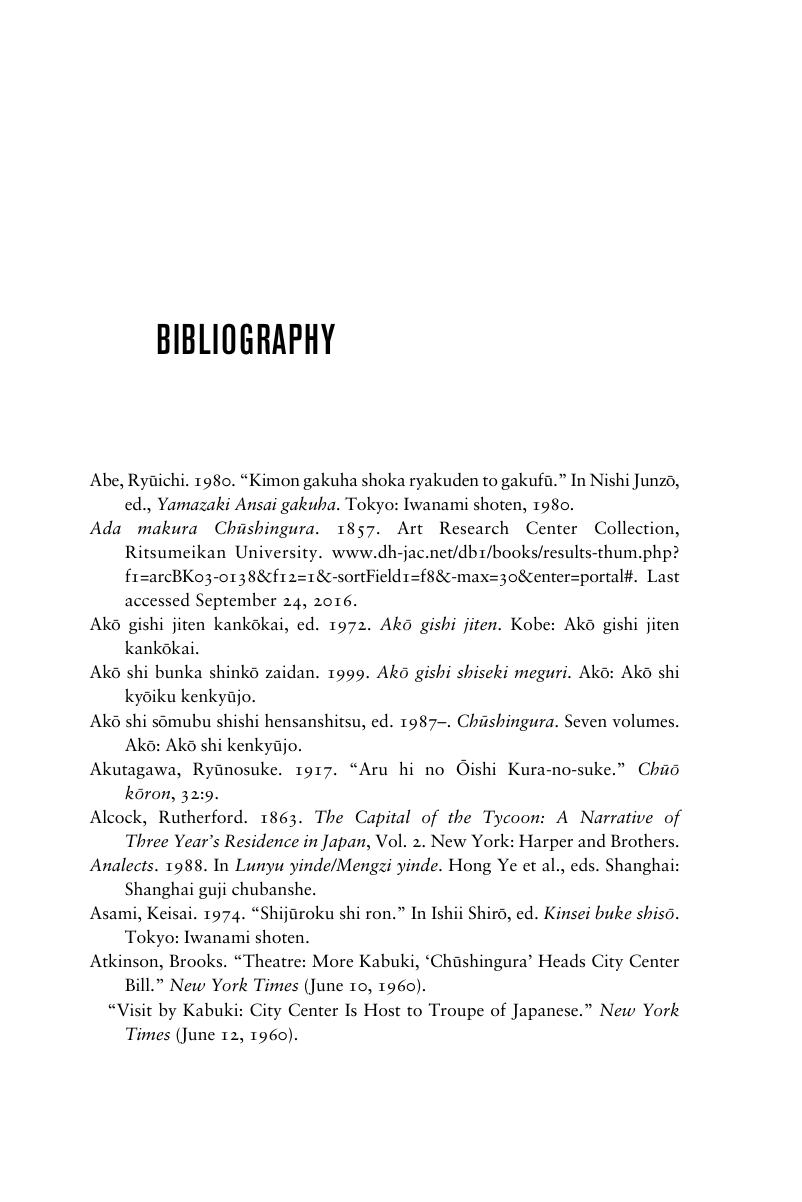Book contents
- The Forty-Seven Rōnin
- The Forty-Seven Rōnin
- Copyright page
- Contents
- Figures
- Preface
- Introduction: Vendetta Overview
- 1 Time and Place
- 2 Eyewitnesses to Bloodshed
- 3 Rōnin Schisms
- 4 Laying Souls to Rest
- 5 Confucian versus Confucian Debates
- 6 Confucian versus Confucian, Round Two
- 7 History on Stage
- 8 Domestic, Foreign, and Anti-foreign Reflections
- 9 Modern Revivals
- 10 The Vendetta through 1945
- 11 Domesticating the Vendetta
- Bibliography
- Index
- References
Bibliography
Published online by Cambridge University Press: 02 March 2018
- The Forty-Seven Rōnin
- The Forty-Seven Rōnin
- Copyright page
- Contents
- Figures
- Preface
- Introduction: Vendetta Overview
- 1 Time and Place
- 2 Eyewitnesses to Bloodshed
- 3 Rōnin Schisms
- 4 Laying Souls to Rest
- 5 Confucian versus Confucian Debates
- 6 Confucian versus Confucian, Round Two
- 7 History on Stage
- 8 Domestic, Foreign, and Anti-foreign Reflections
- 9 Modern Revivals
- 10 The Vendetta through 1945
- 11 Domesticating the Vendetta
- Bibliography
- Index
- References
Summary

- Type
- Chapter
- Information
- The Forty-Seven RoninThe Vendetta in History, pp. 300 - 308Publisher: Cambridge University PressPrint publication year: 2018

